Find The Best Emergency Roof Repair Contractors On Roofyng.co.uk
24/7 Emergency Roof Repair
Roofyng.co.uk connects you with vetted emergency roof repair contractors across UK. Find a contractor now for urgent roof repairs.
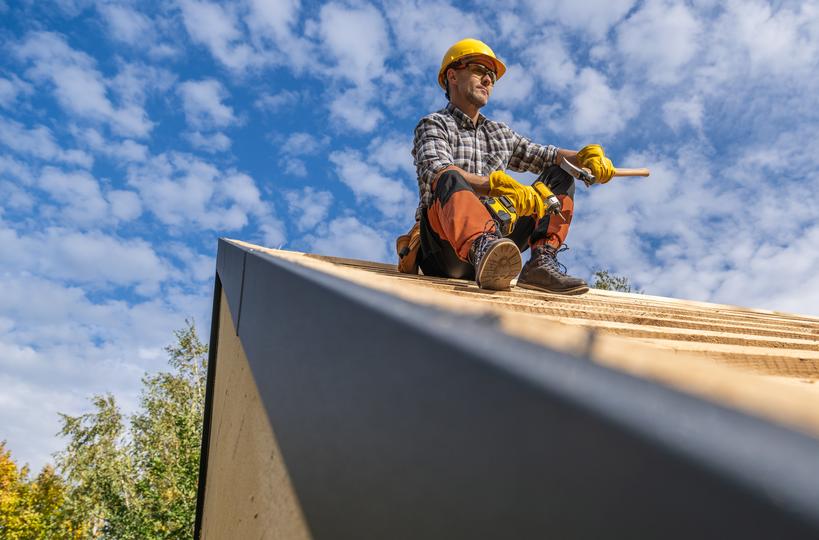
Emergency Roof Repair Contractors Near Me
Need an emergency roof repair contractor in a specific location? Browse our directory to find roofers near you across UK.
Find Emergency Roof Repair Contractors Fast With Roofyng.co.uk
We connect you with vetted emergency roof repair professionals in UK quickly and efficiently.

- Describe Your Roofing Emergency
- Tell us about your urgent roof issue, the type of damage, and your location. Be as detailed as possible so we can connect you with the right contractor.
- We Find Available Contractors
- We'll quickly identify emergency roof repair contractors in your area who are available to help immediately.
- Connect & Get Help
- We'll provide you with contact details for the available contractors so you can discuss your emergency and get immediate assistance.
- howItWorks.feature4.title
- howItWorks.feature4.description
Why Choose Roofyng.co.uk for Emergency Roof Repair?
The smarter way to find Emergency Roof Repair suppliers
When a roofing emergency strikes, you need immediate assistance from reliable professionals. Roofyng.co.uk is your trusted source for finding qualified emergency roof repair contractors in UK, offering a range of benefits designed to provide quick and efficient solutions: We take the stress out of finding the right roofers. Here's how:

- 24/7 Availability
- Roofing emergencies can happen at any time. That's why Roofyng.co.uk provides access to a network of emergency roof repair contractors available 24 hours a day, 7 days a week. We ensure you can get help whenever disaster strikes, day or night.
- Fast Response Times
- We understand the urgency of emergency roof repair situations. Our platform connects you with contractors known for their quick response times, ensuring they arrive promptly to assess the damage and provide immediate solutions.
- Vetted & Reliable Contractors
- We meticulously vet all emergency roof repair contractors in our directory, verifying their licensing, insurance, and experience. You can trust that you're connecting with qualified and reliable professionals who adhere to high industry standards.
- All Emergency Roof Issues Addressed
- Our network of emergency roof repair contractors is equipped to handle a wide range of urgent roofing issues, including:
- Leaks and Water Damage: Promptly addressing leaks caused by storms, heavy rain, or other factors to prevent further damage to your property.
- Wind Damage: Repairing or replacing damaged shingles, flashing, or other roof components caused by strong winds or storms.
- Fallen Trees or Debris: Removing fallen trees or debris from the roof and repairing any structural damage caused by the impact.
- Fire Damage: Assessing fire damage to the roof and providing temporary or permanent repair solutions.
- Transparent Pricing
- We believe in transparent pricing. Our platform allows you to compare quotes from multiple contractors, ensuring you receive competitive and fair pricing for your emergency roof repair.
- Peace of Mind
- During a roofing emergency, you need peace of mind knowing that you're in good hands. Roofyng.co.uk provides a reliable and efficient way to connect with qualified professionals, ensuring your roof is repaired quickly and effectively.
Need Urgent Roof Repairs for Your Business?
Find Commercial Emergency Roof Repair Contractors
Roofyng.co.uk offers access to qualified and experienced commercial emergency roof repair contractors in UK. We understand that a roofing emergency can disrupt your business operations, and we're here to help you find reliable professionals who can quickly assess and repair the damage, minimizing downtime and protecting your assets.
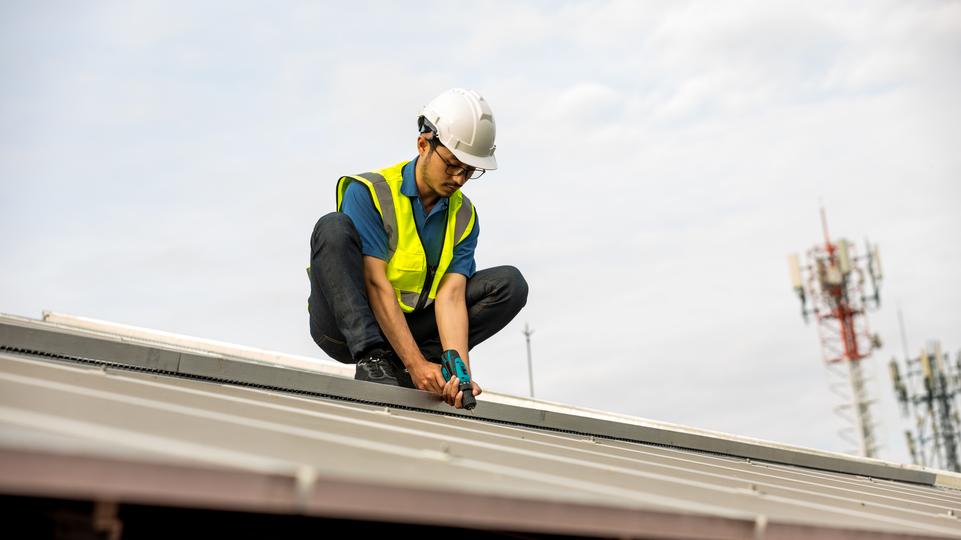
Find trusted roofing companies near you. Get multiple quotes for roof installation, repair, and replacement services.
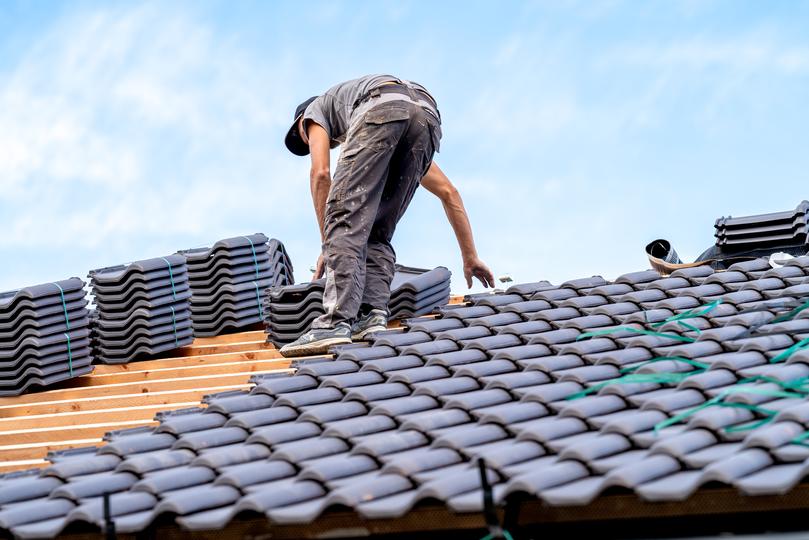
Get a new roof installed by experienced professionals. We offer a variety of roofing materials and styles to suit your needs and budget.

Comprehensive roof repair services for all types of roofs. We fix leaks, damage, and other roofing issues to keep your property protected.

Complete roof replacement services for residential and commercial buildings. We remove your old roof and install a new roof with the material of your choice.

Specialized roofing services for commercial buildings. We handle installation, repair, and replacement for all types of commercial roofs.

24/7 emergency roof repair services for urgent situations. We respond quickly to storm damage, leaks, and other roofing emergencies to protect your property.
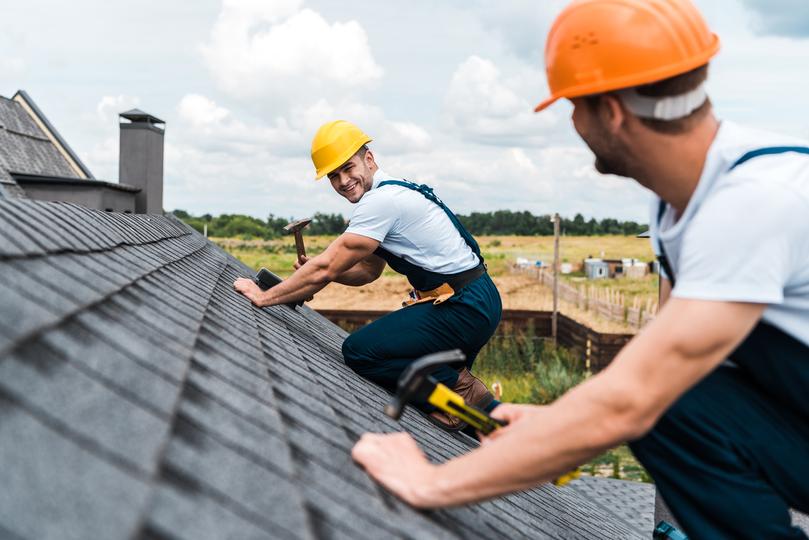
Fast and reliable roof leak repair services. We identify and fix the source of leaks to protect your property from water damage.
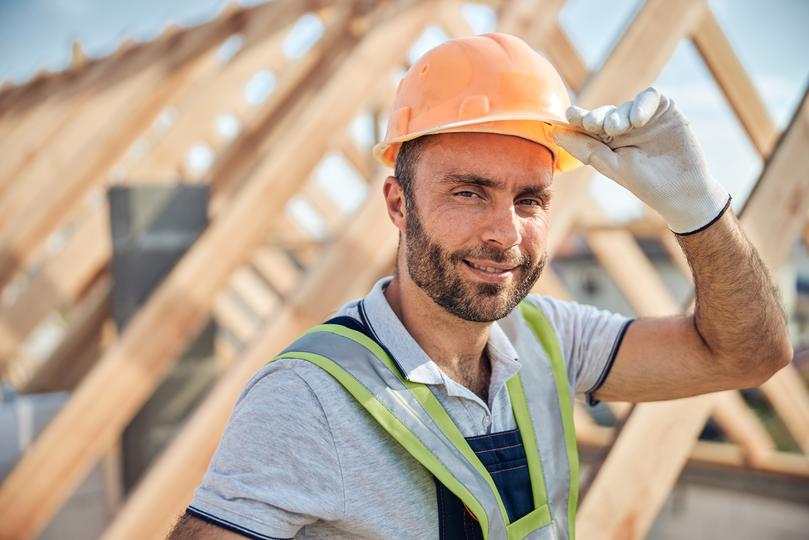
Durable and stylish steel roof installation services. We offer a variety of metal roofing options, including standing seam and corrugated metal.

Expert flat roof installation and repair services. We work with a variety of flat roofing systems, including TPO, EPDM, and modified bitumen.
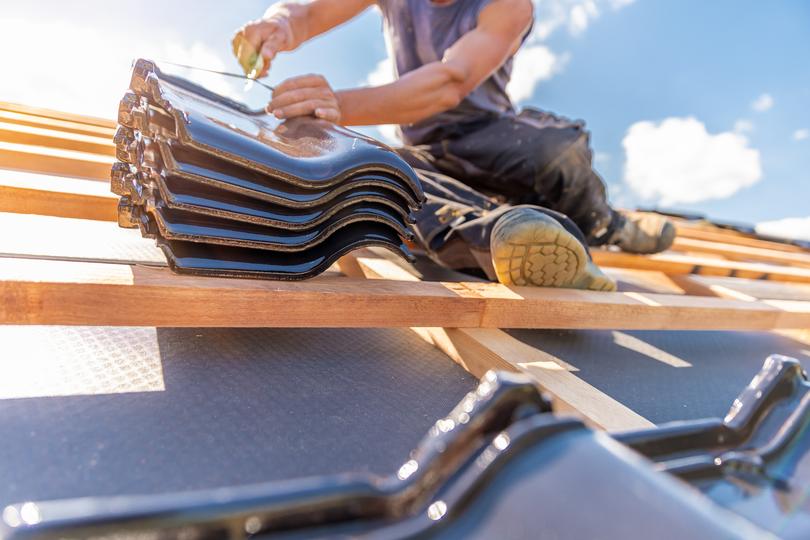
Sustainable and eco-friendly green roof installation and maintenance. We create beautiful living roofs that benefit the environment and your property.
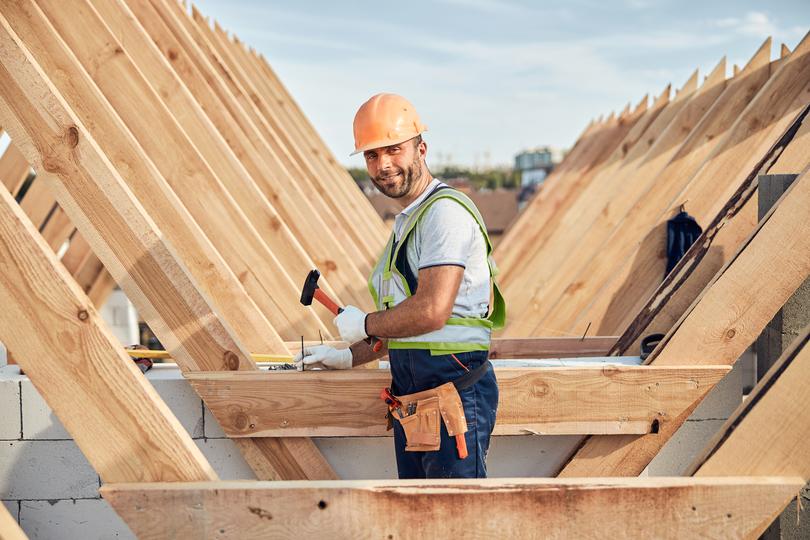
Specialized roofing companies experienced in hail damage repair and replacement. We work with insurance companies to get your roof restored after a hailstorm.
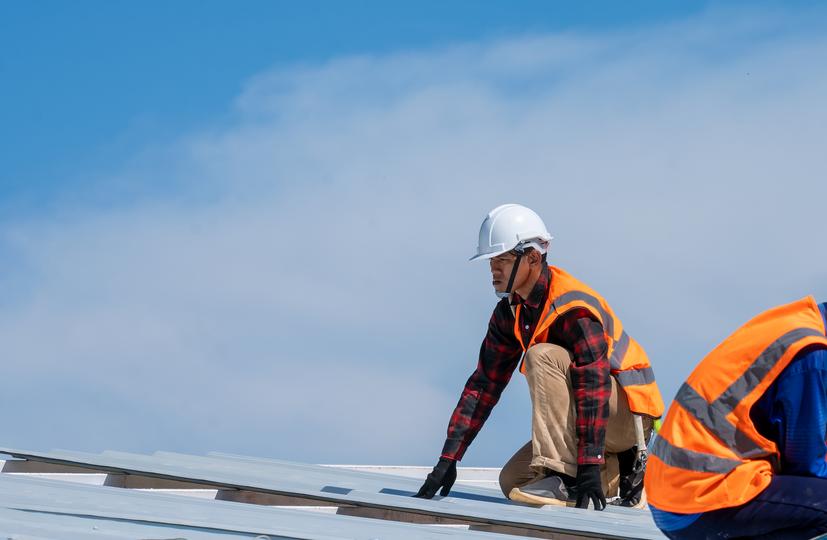
Professional metal roof repair services for residential and commercial properties. We fix leaks, dents, rust, and other metal roof issues.

Certified roof inspectors provide thorough roof inspections for insurance claims, pre-purchase evaluations, and maintenance assessments.
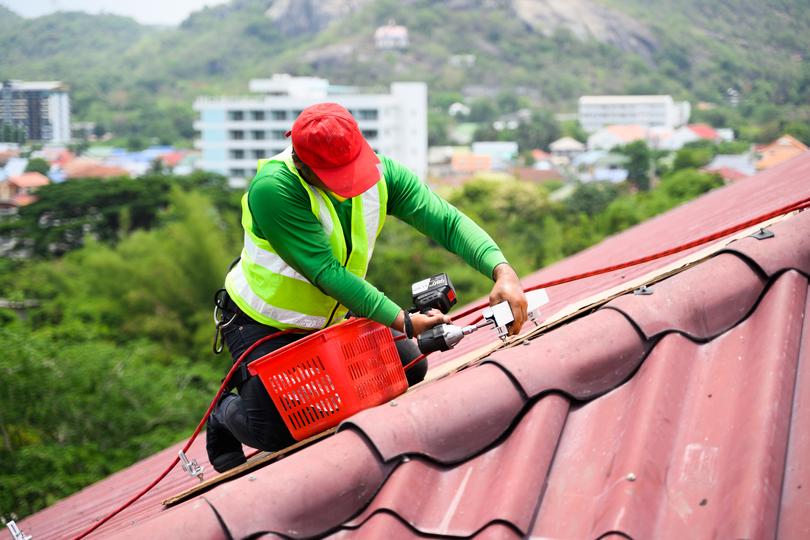
Long-lasting and energy-efficient metal roof replacement services. We install durable steel or metal roofs that enhance your property's value and curb appeal.

Professional roof flashing repair to prevent leaks and water damage. We repair and seal flashing around chimneys, skylights, vents, and other roof penetrations.
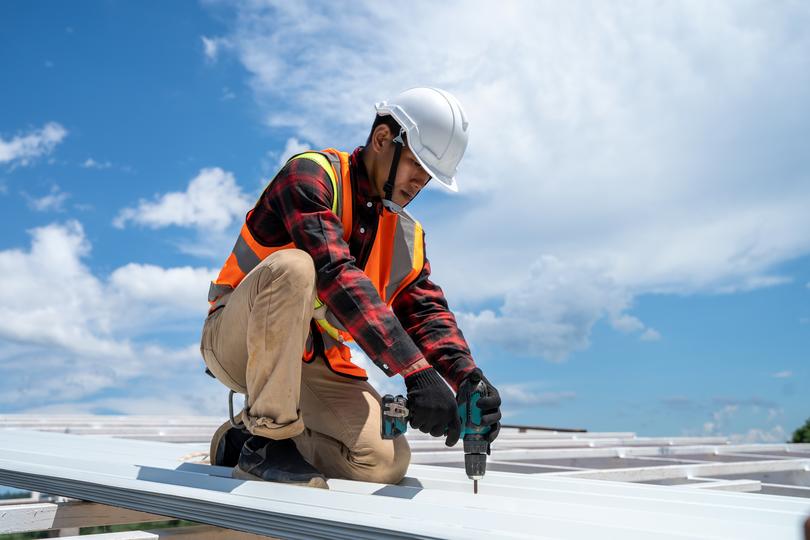
Professional roof waterproofing services to protect your property from leaks and water damage. We apply high-quality sealants, membranes, and coatings to ensure
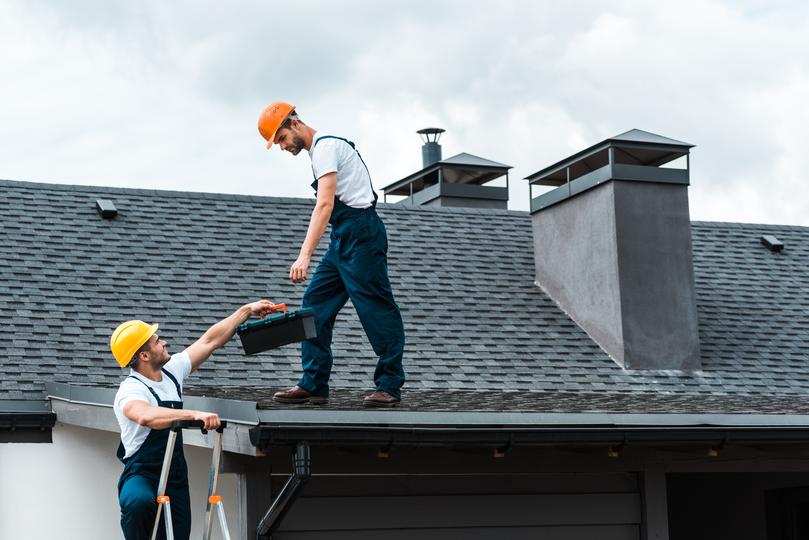
Durable and long-lasting rubber roof (EPDM) installation and repair services. Ideal for flat or low-slope roofs on residential and commercial buildings.

Expert TPO roofing services for flat and low-slope roofs. We offer high-quality TPO roof installation, repair, and maintenance for residential and commercial pro

Specialized roofing contractors for industrial facilities. We handle large-scale roof installations, repairs, and replacements for factories, warehouses, and oth

Reliable flat roof replacement services for residential and commercial properties. We specialize in installing durable and weather-resistant flat roofing systems
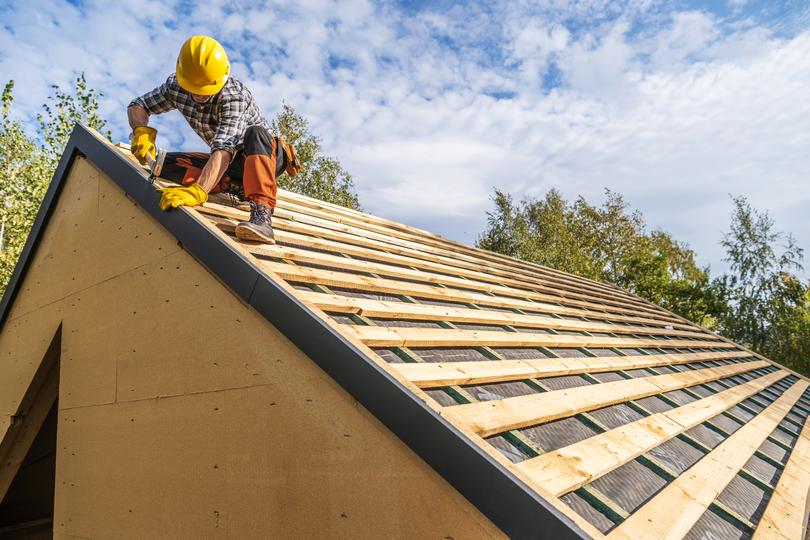
24/7 emergency roof tarping services to protect your property from further damage. We provide temporary roof covers after storms or other incidents.

Improve your home's energy efficiency and comfort with our roof insulation services. We install and replace attic insulation to reduce energy costs and keep your
Emergency Roof Repairs for Your Home?
Find Residential Emergency Roof Repair Contractors
When unexpected roof damage threatens your home's safety and comfort, you need immediate assistance. Roofyng.co.uk connects you with trusted residential emergency roof repair contractors in UK who are available 24/7 to address urgent issues like leaks, storm damage, and fallen debris. We help you find reliable professionals who can quickly secure your home and prevent further damage.

Find trusted roofing companies near you. Get multiple quotes for roof installation, repair, and replacement services.

Get a new roof installed by experienced professionals. We offer a variety of roofing materials and styles to suit your needs and budget.

Comprehensive roof repair services for all types of roofs. We fix leaks, damage, and other roofing issues to keep your property protected.

Complete roof replacement services for residential and commercial buildings. We remove your old roof and install a new roof with the material of your choice.
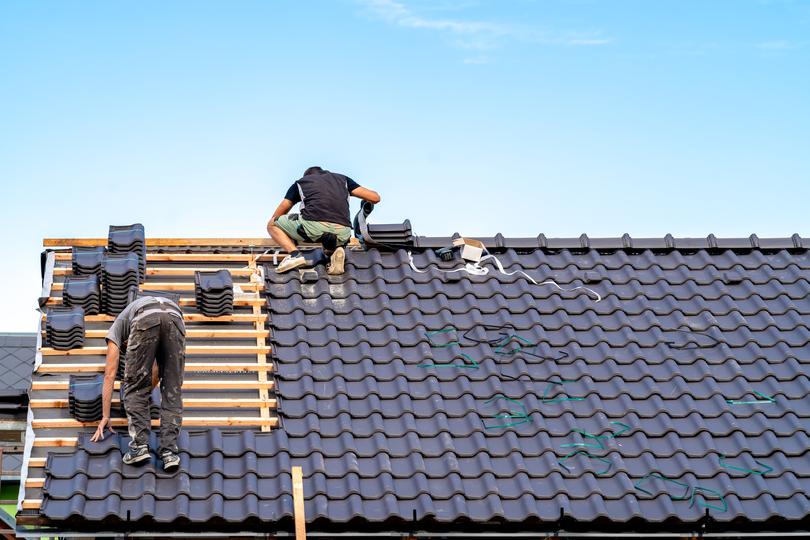
Expert shingle roofers for your home. We specialize in asphalt shingle installation, repair, and replacement, offering a range of shingle types and colors.

24/7 emergency roof repair services for urgent situations. We respond quickly to storm damage, leaks, and other roofing emergencies to protect your property.

Fast and reliable roof leak repair services. We identify and fix the source of leaks to protect your property from water damage.

Expert tile roofing services for your home. We specialize in the installation, repair, and replacement of tile roofs, offering a variety of styles and colors.

Durable and stylish steel roof installation services. We offer a variety of metal roofing options, including standing seam and corrugated metal.

Expert shingle roof repair services for your home. We fix leaks, damaged or missing shingles, and other common shingle roofing problems.
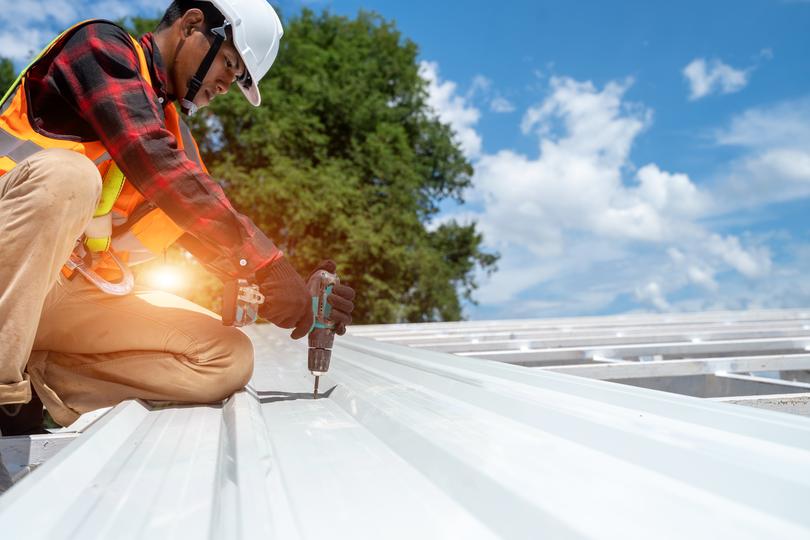
Affordable and efficient shingle roof replacement services. We remove your old shingles and install a new, durable asphalt shingle roof.

Expert flat roof installation and repair services. We work with a variety of flat roofing systems, including TPO, EPDM, and modified bitumen.

Sustainable and eco-friendly green roof installation and maintenance. We create beautiful living roofs that benefit the environment and your property.

Specialized roofing companies experienced in hail damage repair and replacement. We work with insurance companies to get your roof restored after a hailstorm.

Professional metal roof repair services for residential and commercial properties. We fix leaks, dents, rust, and other metal roof issues.

Certified roof inspectors provide thorough roof inspections for insurance claims, pre-purchase evaluations, and maintenance assessments.

Long-lasting and energy-efficient metal roof replacement services. We install durable steel or metal roofs that enhance your property's value and curb appeal.

Professional roof flashing repair to prevent leaks and water damage. We repair and seal flashing around chimneys, skylights, vents, and other roof penetrations.

Professional roof waterproofing services to protect your property from leaks and water damage. We apply high-quality sealants, membranes, and coatings to ensure

Durable and long-lasting rubber roof (EPDM) installation and repair services. Ideal for flat or low-slope roofs on residential and commercial buildings.

Expert TPO roofing services for flat and low-slope roofs. We offer high-quality TPO roof installation, repair, and maintenance for residential and commercial pro

Specialized tile roof repair services. We fix leaks, replace cracked or broken tiles, and provide other tile roof maintenance to keep your roof in excellent cond

Beautiful and durable tile roof replacement services. We install high-quality clay or concrete tile roofs, offering a classic and elegant look for your home.

Reliable flat roof replacement services for residential and commercial properties. We specialize in installing durable and weather-resistant flat roofing systems

24/7 emergency roof tarping services to protect your property from further damage. We provide temporary roof covers after storms or other incidents.
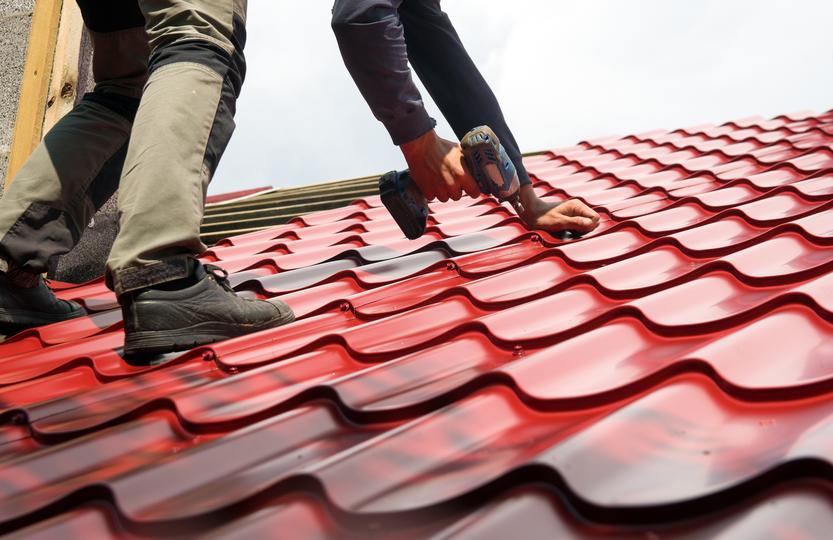
Expert chimney flashing repair services to prevent leaks and water damage. We ensure your chimney is properly sealed to protect your home.

Improve your home's energy efficiency and comfort with our roof insulation services. We install and replace attic insulation to reduce energy costs and keep your

Beautiful and durable cedar shake roofing services. We specialize in cedar shake installation, repair, and replacement, providing a classic and elegant look for
Facing a Roofing Emergency?
Find Emergency Roof Repair Contractors Now!
Connect with available and qualified emergency roof repair professionals in your area.
Emergency Roof Repair Glossary
Leak
Tarp
Shingle
Flashing
Gutter
Downspout
Roof Deck
Roof Truss
Wind Damage
Hail Damage
Emergency Repair
Temporary Repair
Permanent Repair
Roof Inspection
Insurance Claim
Emergency Roof Repair FAQs
What is considered an emergency roof repair?
- Active leaks during a storm: Water pouring into your home.
- Significant roof damage from a fallen tree or debris.
- Missing or severely damaged shingles after high winds.
- A partial or complete roof collapse.
How much does an emergency roof repair cost in the UK?
How do I find a 24-hour emergency roof repair contractor?
What should I do if my roof is leaking during a storm?
- Safety first: Avoid going onto the roof during a storm. It's extremely dangerous.
- Contain the leak: Place buckets or tarps to catch dripping water and protect your belongings.
- Document the damage: Take photos and videos of the leak and any visible damage. This will be helpful for insurance claims.
- Call an emergency roof repair contractor: Once the storm has passed, contact a professional to assess the damage and perform necessary repairs. You can find qualified contractors on Roofyng.co.uk.
Can I temporarily fix a roof leak myself?
How do I know if I need emergency roof repair after a storm?
- Active leaks: Water dripping into your home during or immediately after a storm.
- Missing or damaged shingles: Large sections of missing shingles, or shingles that are cracked, broken, or curled.
- Damage to flashing: Flashing that is torn, lifted, or missing around chimneys, vents, or skylights.
- Sagging or uneven rooflines: This could indicate structural damage that needs immediate attention.
- Debris on the roof: Fallen tree branches, power lines, or other debris on the roof can cause damage and should be removed as soon as possible.
Will my homeowner's insurance cover emergency roof repairs?
What should I look for when hiring an emergency roof repair contractor?
- 24/7 Availability: Confirm they offer 24/7 emergency services for immediate assistance.
- Licensing and Insurance: Verify that they are licensed to operate in your area and have adequate insurance coverage, including liability and workers' compensation, to protect you from liability.
- Experience: Look for contractors with extensive experience in handling emergency roof repairs. Ask about their experience with similar repairs and the specific type of roof you have.
- Reputation: Check online reviews, ratings, and testimonials from previous customers to assess their reputation and reliability.
- Written Estimates: Get a written estimate outlining the scope of work, materials, labor costs, and any additional fees before any work begins.
- Warranties: Inquire about the warranties they offer on their work, both for materials and labor. A reputable contractor will stand behind their repairs with a solid warranty.
What are the steps involved in emergency roof repair?
- Initial Assessment: The contractor will assess the damage, identify the source of the problem, and determine the scope of the repairs needed.
- Temporary Protection: If necessary, the contractor will install a tarp or other temporary covering to prevent further water intrusion while permanent repairs are pending.
- Repairs: The contractor will perform the required repairs, such as replacing damaged shingles, repairing flashing, or addressing structural issues.
- Cleanup: After completing the repairs, the contractor will clean up the work area and remove any debris.
- Final Inspection: A final inspection ensures the repairs effectively address the problem and meet safety standards.
What is the difference between emergency roof repair and regular roof repair?
Emergency Roof Repair: Addresses immediate and critical issues that require immediate attention to prevent further damage or safety hazards. It's typically done as soon as possible, regardless of the time of day or weather conditions, and often involves temporary fixes followed by permanent repairs.
Regular Roof Repair: Deals with non-urgent issues that can be scheduled and addressed within a reasonable timeframe. It usually involves planned repairs to address minor damage, leaks, or maintenance issues.
What are some common causes of emergency roof repairs?
- Severe Weather Events: Storms, high winds, hail, heavy rain, and snow can cause significant roof damage, leading to leaks, missing shingles, and structural issues.
- Falling Objects: Trees, branches, or other debris falling onto the roof can cause damage that needs immediate attention.
- Improper Installation or Maintenance: Poorly installed roofs or neglected maintenance can result in weak points, leaks, and premature roof failure.
- Age: As roofs age, they become more susceptible to damage and may require emergency repairs to address leaks or other problems.
How can I prevent emergency roof repairs?
- Regular Inspections: Conduct thorough roof inspections at least twice a year and after any severe weather event. Look for missing or damaged shingles, flashing issues, or signs of leaks.
- Proper Maintenance: Clean gutters and downspouts regularly to prevent clogs and ensure proper water drainage. Trim overhanging branches to avoid debris buildup and potential damage from falling branches.
- Professional Inspections: Consider scheduling professional roof inspections by a qualified roofing contractor every few years. They can detect hidden problems and recommend necessary repairs or maintenance.
- Quality Materials and Installation: When installing a new roof or making repairs, choose high-quality roofing materials and hire experienced, reputable roofing contractors who adhere to proper installation techniques and building codes.
- Adequate Ventilation: Ensure your attic is properly ventilated to prevent moisture buildup and reduce the risk of ice dams in cold climates.
What should I do if I suspect a roof leak but can't find the source?
- Check the Attic: Inspect your attic for signs of water damage, such as damp insulation, water stains, or mold growth. Follow the trail of water damage to try and locate the point of entry.
- Inspect the Roof: Examine the roof for missing or damaged shingles, flashing issues, or any visible gaps or cracks that could allow water to penetrate.
- Check Gutters and Downspouts: Ensure gutters and downspouts are clear and functioning correctly, as clogged gutters can lead to water backup and leaks.
- Professional Inspection: If you're unable to find the leak source, contact a reputable roofing contractor for a professional inspection. They have the expertise and tools to identify hidden leaks and determine the best course of action.
What are some temporary measures I can take to stop a roof leak?
- Apply Roofing Cement: If the leak is due to a small crack or hole in a shingle, apply roofing cement to seal the gap. Roofing cement is a waterproof sealant that can provide a temporary fix.
- Use Sealant Tape: Sealant tape is a waterproof tape that can be applied over cracks or gaps in flashing or other roof components. It provides a temporary barrier against water intrusion.
- Install a Tarp: Cover the affected area with a heavy-duty tarp, secured with nails or weights, to create a temporary waterproof barrier. Ensure the tarp extends beyond the leak area to effectively direct water away.
- Divert Water: If the leak is near a gutter or downspout, you might be able to temporarily divert water away from the leak point by adjusting the gutter or using a temporary extension.
Can I walk on my roof to inspect for damage?
How do I deal with a fallen tree on my roof?
How can I protect my roof from storm damage?
- Regular Maintenance: Inspect your roof regularly for loose or missing shingles, damaged flashing, and clogged gutters. Address any issues promptly.
- Trim Overhanging Branches: Keep trees around your property trimmed to prevent branches from falling on your roof during a storm.
- Reinforce Vulnerable Areas: Reinforce vulnerable areas of your roof, like gables and eaves, with hurricane straps or other structural reinforcements, especially in high-wind-prone regions.
- Install Impact-Resistant Shingles: Consider using impact-resistant shingles, which are designed to withstand hail impacts better than standard shingles.
- Choose a Wind-Resistant Roofing System: When installing a new roof, select a roofing system with a high wind rating to provide better protection against strong winds.
What should I do if my roof is damaged in a fire?
- Ensure Safety: Prioritize safety and do not attempt to access the damaged roof or make any repairs yourself. Wait for professional assistance.
- Contact Your Insurance Company: Report the damage to your insurance company as soon as possible. They will guide you through the claims process.
- Contact a Roofing Contractor: Engage a reputable roofing contractor specializing in fire-damaged roofs to assess the extent of the damage and provide recommendations for repair or replacement.
- Secure the Property: Take necessary measures to secure your property, such as boarding up windows and doors, to prevent further damage or theft.
What are the signs of roof damage from animals?
- Missing or Damaged Shingles: Animals might chew, scratch, or dislodge shingles to create entry points.
- Holes or Gaps: Check for holes or gaps in the roof, soffit, or fascia, indicating animal entry or nesting.
- Droppings or Nesting Materials: Finding animal droppings or nesting materials in your attic or on the roof suggests animal activity.
- Chewed Wires or Insulation: Animals might chew on wiring or insulation, posing a fire hazard.
- Scratching or Gnawing Sounds: Hearing scratching or gnawing sounds coming from your attic, especially at night, indicates possible animal intrusion.
How can I prevent animal damage to my roof?
- Trim Overhanging Branches: Trim tree branches away from the roof to prevent animals from easily accessing the roof.
- Seal Entry Points: Seal any holes, gaps, or cracks in the roof, soffit, or fascia using caulk, wire mesh, or other suitable materials.
- Install Chimney Caps and Vent Covers: Cover chimneys and vents with caps or screens to prevent animals from entering or nesting.
- Use Animal Repellents: Apply animal repellents around the perimeter of your house or in areas where animals are likely to access the roof. Choose repellents that are safe for your family and pets.
- Professional Pest Control: If you have persistent animal problems, consider hiring a professional pest control service to remove and deter animals from your property.
What should I do if my roof is leaking but it's not raining?
- Ensure Proper Ventilation: Improve attic ventilation by installing soffit vents, ridge vents, or other ventilation systems to allow for better airflow and prevent moisture buildup.
- Check for Plumbing Leaks: Inspect plumbing pipes and fixtures in your attic for leaks, as they can contribute to moisture problems.
- Insulate Properly: Make sure your attic is adequately insulated to prevent warm air from escaping from your living spaces. This helps maintain a consistent temperature and minimize condensation.
- Use a Dehumidifier: If condensation is a recurring issue, consider using a dehumidifier in your attic to reduce moisture levels.
How do I know if my roof needs to be re-roofed?
- Your roof has only one existing layer of shingles.
- The roof deck is in good condition.
- The damage is primarily cosmetic and doesn't involve significant structural issues.
What are the benefits of regular roof maintenance?
- Extends Roof Lifespan: Early detection and resolution of minor issues can prevent them from escalating into major problems, prolonging the life of your roof.
- Prevents Leaks: Regular inspections and cleaning can identify potential leak sources, allowing for timely repairs and preventing water damage.
- Saves Money: Addressing minor repairs promptly can be significantly less expensive than dealing with major roof damage or a premature replacement.
- Improves Energy Efficiency: Maintaining proper ventilation and insulation can enhance your roof's energy efficiency, lowering heating and cooling costs.
- Maintains Curb Appeal: Regular cleaning and maintenance can keep your roof looking its best, enhancing your home's curb appeal.
- Ensures Safety: Maintaining a structurally sound roof is crucial for the safety of your family and property.
How do I find emergency roof repair near me?
What is considered an emergency roof repair?
- Active leaks during a storm: Water pouring into your home.
- Significant roof damage from a fallen tree or debris.
- Missing or severely damaged shingles after high winds.
- A partial or complete roof collapse.
How much does an emergency roof repair cost in the UK?
How do I find a 24-hour emergency roof repair contractor?
What should I do if my roof is leaking during a storm?
- Safety first: Avoid going onto the roof during a storm. It's extremely dangerous.
- Contain the leak: Place buckets or tarps to catch dripping water and protect your belongings.
- Document the damage: Take photos and videos of the leak and any visible damage. This will be helpful for insurance claims.
- Call an emergency roof repair contractor: Once the storm has passed, contact a professional to assess the damage and perform necessary repairs. You can find qualified contractors on Roofyng.co.uk.
Can I temporarily fix a roof leak myself?
How do I know if I need emergency roof repair after a storm?
- Active leaks: Water dripping into your home during or immediately after a storm.
- Missing or damaged shingles: Large sections of missing shingles, or shingles that are cracked, broken, or curled.
- Damage to flashing: Flashing that is torn, lifted, or missing around chimneys, vents, or skylights.
- Sagging or uneven rooflines: This could indicate structural damage that needs immediate attention.
- Debris on the roof: Fallen tree branches, power lines, or other debris on the roof can cause damage and should be removed as soon as possible.
Will my homeowner's insurance cover emergency roof repairs?
What should I look for when hiring an emergency roof repair contractor?
- 24/7 Availability: Confirm they offer 24/7 emergency services for immediate assistance.
- Licensing and Insurance: Verify that they are licensed to operate in your area and have adequate insurance coverage, including liability and workers' compensation, to protect you from liability.
- Experience: Look for contractors with extensive experience in handling emergency roof repairs. Ask about their experience with similar repairs and the specific type of roof you have.
- Reputation: Check online reviews, ratings, and testimonials from previous customers to assess their reputation and reliability.
- Written Estimates: Get a written estimate outlining the scope of work, materials, labor costs, and any additional fees before any work begins.
- Warranties: Inquire about the warranties they offer on their work, both for materials and labor. A reputable contractor will stand behind their repairs with a solid warranty.
What are the steps involved in emergency roof repair?
- Initial Assessment: The contractor will assess the damage, identify the source of the problem, and determine the scope of the repairs needed.
- Temporary Protection: If necessary, the contractor will install a tarp or other temporary covering to prevent further water intrusion while permanent repairs are pending.
- Repairs: The contractor will perform the required repairs, such as replacing damaged shingles, repairing flashing, or addressing structural issues.
- Cleanup: After completing the repairs, the contractor will clean up the work area and remove any debris.
- Final Inspection: A final inspection ensures the repairs effectively address the problem and meet safety standards.
What is the difference between emergency roof repair and regular roof repair?
Emergency Roof Repair: Addresses immediate and critical issues that require immediate attention to prevent further damage or safety hazards. It's typically done as soon as possible, regardless of the time of day or weather conditions, and often involves temporary fixes followed by permanent repairs.
Regular Roof Repair: Deals with non-urgent issues that can be scheduled and addressed within a reasonable timeframe. It usually involves planned repairs to address minor damage, leaks, or maintenance issues.
What are some common causes of emergency roof repairs?
- Severe Weather Events: Storms, high winds, hail, heavy rain, and snow can cause significant roof damage, leading to leaks, missing shingles, and structural issues.
- Falling Objects: Trees, branches, or other debris falling onto the roof can cause damage that needs immediate attention.
- Improper Installation or Maintenance: Poorly installed roofs or neglected maintenance can result in weak points, leaks, and premature roof failure.
- Age: As roofs age, they become more susceptible to damage and may require emergency repairs to address leaks or other problems.
How can I prevent emergency roof repairs?
- Regular Inspections: Conduct thorough roof inspections at least twice a year and after any severe weather event. Look for missing or damaged shingles, flashing issues, or signs of leaks.
- Proper Maintenance: Clean gutters and downspouts regularly to prevent clogs and ensure proper water drainage. Trim overhanging branches to avoid debris buildup and potential damage from falling branches.
- Professional Inspections: Consider scheduling professional roof inspections by a qualified roofing contractor every few years. They can detect hidden problems and recommend necessary repairs or maintenance.
- Quality Materials and Installation: When installing a new roof or making repairs, choose high-quality roofing materials and hire experienced, reputable roofing contractors who adhere to proper installation techniques and building codes.
- Adequate Ventilation: Ensure your attic is properly ventilated to prevent moisture buildup and reduce the risk of ice dams in cold climates.
What should I do if I suspect a roof leak but can't find the source?
- Check the Attic: Inspect your attic for signs of water damage, such as damp insulation, water stains, or mold growth. Follow the trail of water damage to try and locate the point of entry.
- Inspect the Roof: Examine the roof for missing or damaged shingles, flashing issues, or any visible gaps or cracks that could allow water to penetrate.
- Check Gutters and Downspouts: Ensure gutters and downspouts are clear and functioning correctly, as clogged gutters can lead to water backup and leaks.
- Professional Inspection: If you're unable to find the leak source, contact a reputable roofing contractor for a professional inspection. They have the expertise and tools to identify hidden leaks and determine the best course of action.
What are some temporary measures I can take to stop a roof leak?
- Apply Roofing Cement: If the leak is due to a small crack or hole in a shingle, apply roofing cement to seal the gap. Roofing cement is a waterproof sealant that can provide a temporary fix.
- Use Sealant Tape: Sealant tape is a waterproof tape that can be applied over cracks or gaps in flashing or other roof components. It provides a temporary barrier against water intrusion.
- Install a Tarp: Cover the affected area with a heavy-duty tarp, secured with nails or weights, to create a temporary waterproof barrier. Ensure the tarp extends beyond the leak area to effectively direct water away.
- Divert Water: If the leak is near a gutter or downspout, you might be able to temporarily divert water away from the leak point by adjusting the gutter or using a temporary extension.
Can I walk on my roof to inspect for damage?
How do I deal with a fallen tree on my roof?
How can I protect my roof from storm damage?
- Regular Maintenance: Inspect your roof regularly for loose or missing shingles, damaged flashing, and clogged gutters. Address any issues promptly.
- Trim Overhanging Branches: Keep trees around your property trimmed to prevent branches from falling on your roof during a storm.
- Reinforce Vulnerable Areas: Reinforce vulnerable areas of your roof, like gables and eaves, with hurricane straps or other structural reinforcements, especially in high-wind-prone regions.
- Install Impact-Resistant Shingles: Consider using impact-resistant shingles, which are designed to withstand hail impacts better than standard shingles.
- Choose a Wind-Resistant Roofing System: When installing a new roof, select a roofing system with a high wind rating to provide better protection against strong winds.
What should I do if my roof is damaged in a fire?
- Ensure Safety: Prioritize safety and do not attempt to access the damaged roof or make any repairs yourself. Wait for professional assistance.
- Contact Your Insurance Company: Report the damage to your insurance company as soon as possible. They will guide you through the claims process.
- Contact a Roofing Contractor: Engage a reputable roofing contractor specializing in fire-damaged roofs to assess the extent of the damage and provide recommendations for repair or replacement.
- Secure the Property: Take necessary measures to secure your property, such as boarding up windows and doors, to prevent further damage or theft.
What are the signs of roof damage from animals?
- Missing or Damaged Shingles: Animals might chew, scratch, or dislodge shingles to create entry points.
- Holes or Gaps: Check for holes or gaps in the roof, soffit, or fascia, indicating animal entry or nesting.
- Droppings or Nesting Materials: Finding animal droppings or nesting materials in your attic or on the roof suggests animal activity.
- Chewed Wires or Insulation: Animals might chew on wiring or insulation, posing a fire hazard.
- Scratching or Gnawing Sounds: Hearing scratching or gnawing sounds coming from your attic, especially at night, indicates possible animal intrusion.
How can I prevent animal damage to my roof?
- Trim Overhanging Branches: Trim tree branches away from the roof to prevent animals from easily accessing the roof.
- Seal Entry Points: Seal any holes, gaps, or cracks in the roof, soffit, or fascia using caulk, wire mesh, or other suitable materials.
- Install Chimney Caps and Vent Covers: Cover chimneys and vents with caps or screens to prevent animals from entering or nesting.
- Use Animal Repellents: Apply animal repellents around the perimeter of your house or in areas where animals are likely to access the roof. Choose repellents that are safe for your family and pets.
- Professional Pest Control: If you have persistent animal problems, consider hiring a professional pest control service to remove and deter animals from your property.
What should I do if my roof is leaking but it's not raining?
- Ensure Proper Ventilation: Improve attic ventilation by installing soffit vents, ridge vents, or other ventilation systems to allow for better airflow and prevent moisture buildup.
- Check for Plumbing Leaks: Inspect plumbing pipes and fixtures in your attic for leaks, as they can contribute to moisture problems.
- Insulate Properly: Make sure your attic is adequately insulated to prevent warm air from escaping from your living spaces. This helps maintain a consistent temperature and minimize condensation.
- Use a Dehumidifier: If condensation is a recurring issue, consider using a dehumidifier in your attic to reduce moisture levels.
How do I know if my roof needs to be re-roofed?
- Your roof has only one existing layer of shingles.
- The roof deck is in good condition.
- The damage is primarily cosmetic and doesn't involve significant structural issues.
What are the benefits of regular roof maintenance?
- Extends Roof Lifespan: Early detection and resolution of minor issues can prevent them from escalating into major problems, prolonging the life of your roof.
- Prevents Leaks: Regular inspections and cleaning can identify potential leak sources, allowing for timely repairs and preventing water damage.
- Saves Money: Addressing minor repairs promptly can be significantly less expensive than dealing with major roof damage or a premature replacement.
- Improves Energy Efficiency: Maintaining proper ventilation and insulation can enhance your roof's energy efficiency, lowering heating and cooling costs.
- Maintains Curb Appeal: Regular cleaning and maintenance can keep your roof looking its best, enhancing your home's curb appeal.
- Ensures Safety: Maintaining a structurally sound roof is crucial for the safety of your family and property.